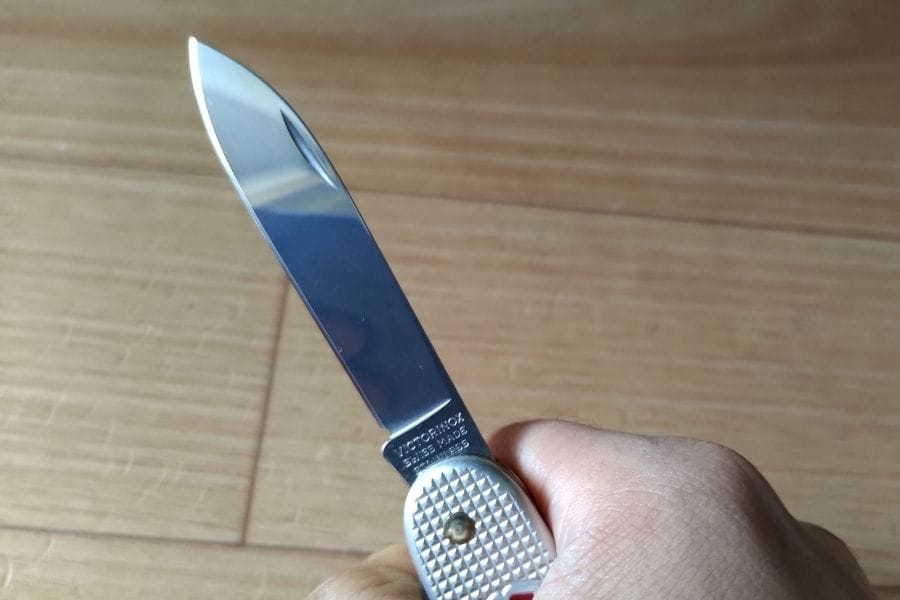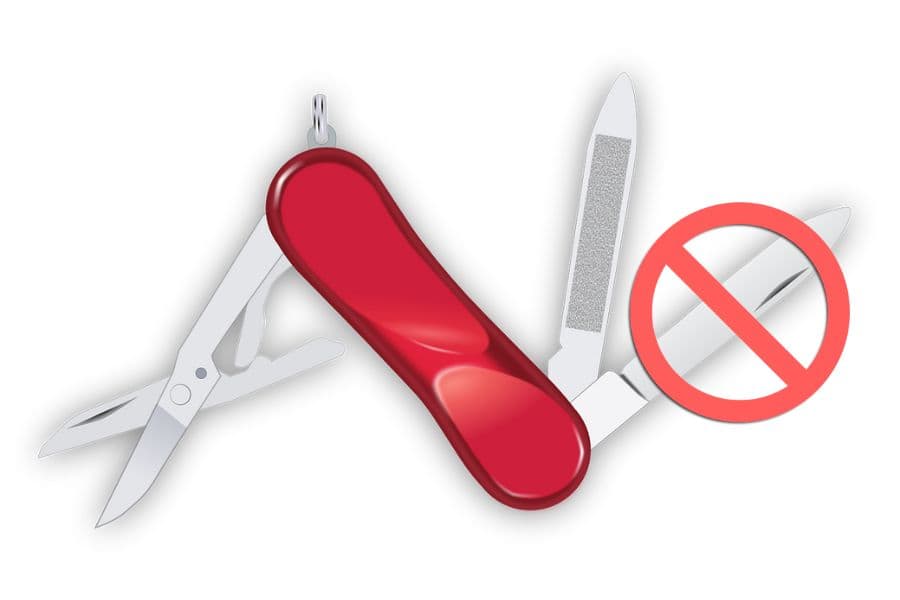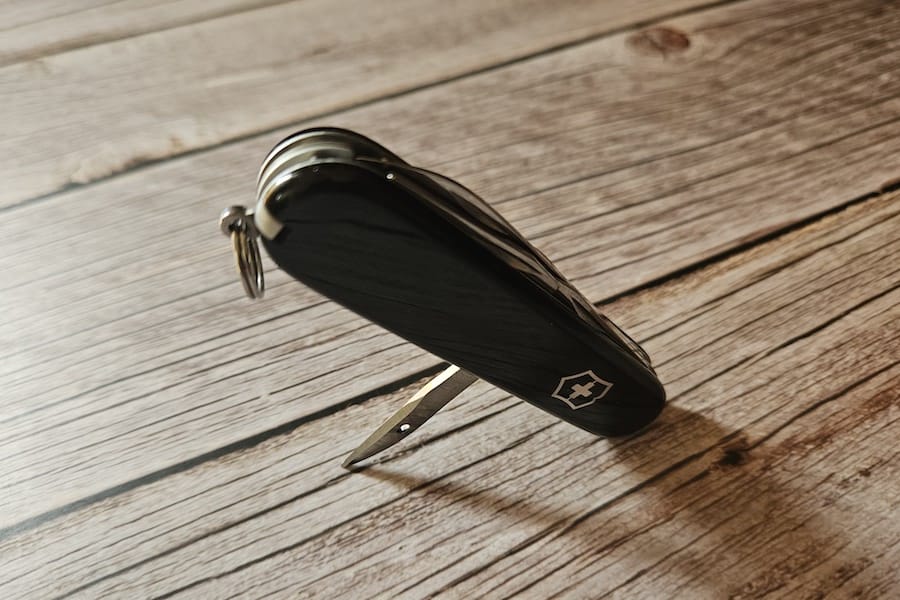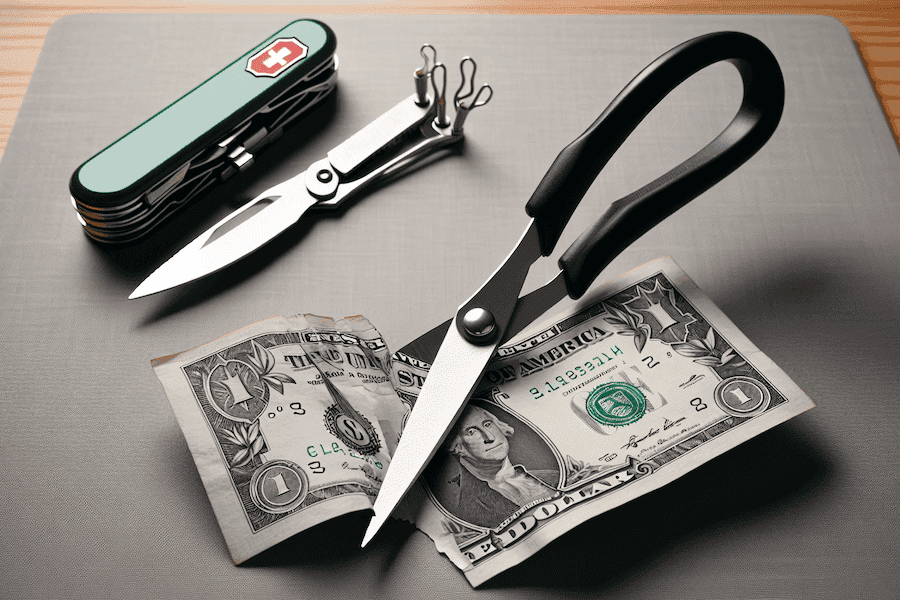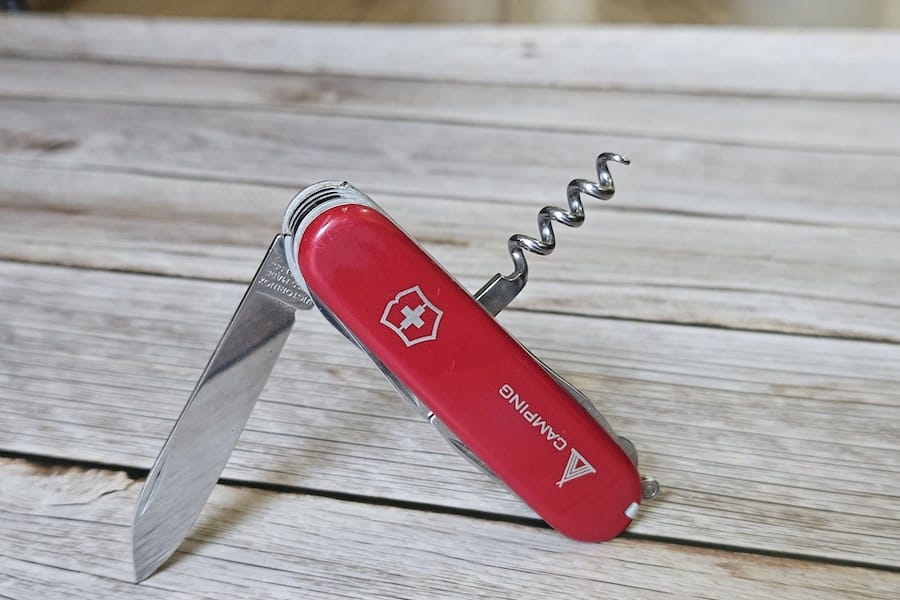Swiss Army Knives (SAK) are great performers as pocket knives. Part of the reason behind their performance is the steel that Victorinox uses.
The shiny steel not only looks good but also seems to be strong and durable enough for most tasks. They also last longer and are highly resistant to rusting.
Have you ever wondered what variety of steel is used in the Victorinox SAKs?
Victorinox uses a martensitic steel variety for their Swiss Army Knives, popularly referred to as Inox. The word Inox means stainless. The alloy consists of a high percentage of Chromium which makes the steel shiny and corrosion-resistant. The steel is subjected to high-quality heat treatment to achieve the desired hardness.
Victorinox does not officially advertise the composition of the alloy or the quality of the steel and its hardness. Some say it is an exclusive blend of steel from Germany and France. Also, it is understood that over the years, they have made alterations in the alloy composition to make it better suited for their Swiss Army Knives.
Nobody can say for sure what the alloy consists of, as the actual composition of the alloy and the hardening process is proprietary to Victorinox. However, the composition and other details of the steel have been revealed from time to time either in various discussions or through practical tests by knife enthusiasts.
Victorinox Alloy Steel Composition
Swiss Army Knives usually have a lot of tools, and all these tools are not made from the exact same variety of steel. But mostly, we are concerned about the steel used in the knife blades. Like any alloy steel, the main component of martensitic steel alloy is Iron. Other elements used in the alloy are Chromium, Silicon, Carbon, Molybdenum, and Manganese.
Following is the composition of the different elements in the steel alloy used for making the knife blades in a SAK.
| ELEMENT | % (Approx) |
|---|---|
| Chromium | 13 – 15 |
| Silicon | 0.5 – 0.6 |
| Carbon | 0.5 – 0.7 |
| Molybdenum | 0.4 – 0.5 |
| Manganese | 0.4 – 0.5 |
The above composition may not be exactly what Victorinox is using, but it is very near to the exact formula. This steel is designated as EN 1.4110. The chemical designation of the steel is X55CrMo14.
The high percentage of Chromium is what gives the steel its lustre and its stainless steel properties.
Note that some parts of the SAK, such as the springs and the riggings use a different steel variety.
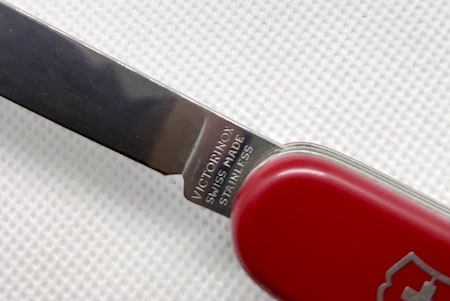
The separators between the layers of the SAK are made of Aluminium.
Even the other tools in the SAK may not use the exact same steel. For example, the slip joint springs use EN 1.4021.
Victorinox Steel Hardness
Victorinox uses a sophisticated hardening process in the manufacture of the steel used in their Swiss Army Knives. The steel used in the blades goes through a hardening process at 1040°C and an annealing temperature of 160°C. Through this process, the blades achieve an average hardness of HRC 56 on the Rockwell Hardness Scale.
However, all the tools are not made up of steel of the same hardness. Victorinox uses different hardness levels for different tools based on the kind of tasks the tools are meant for. Here is a list of some of the common tools in a SAK with their hardness measurements.
| Tool | Rockwell Hardness Scale |
|---|---|
| Blade | HRC 56 |
| Metal File, Wood Saw, Scissors, Nail File | HRC 53 |
| Bottle Opener, Can Opener, Screwdriver, Awl | HRC 52 |
| Internal Springs, Rivets, Corkscrew | HRC 49 |
The metal file and saw are further enhanced with hard Chromium plating so that they can cut iron as well as steel.
The Chromium-Carbide deposits in stainless steel usually makes it a bit brittle in nature. This makes it almost impossible to make the blade egde extremely sharp. However, Victorinox uses a special process to keep the Chromium-Carbide deposits as small as possible making the steel more receptive to ultra-fine grinding and honing to attain super sharpness.
Features of Victorinox Steel
The unique composition along with the special hardening process gives Victorinox steel some unique usability features:
1. Corrosion Resistance
Among all multi-tool manufacturers, Victorinox multi-tools are the best in terms of corrosion resistance. This is the main reason why many sailors prefer Victorinox over any other multi-tool or knife brand. There are stories of Victorinox tools remaining submerged under the sea for months and retrieved later without any major corrosion or rusting anywhere in the tool.
2. Edge Retention
The Victorinox blades come very sharp from the factory and also hold their sharpness for a considerable time. The steel may not be at par at holding an edge with some of the best steels available in the market, but the performance is very acceptable for a pocket knife.
3. Ease of Sharpening
The Victorinox blades can be sharpened easily. In fact, it is much easier to re-sharpen a Victorinox knife to an extremely sharp edge than any other knife from other reputable manufacturers that use better steel with higher hardness levels. People have used commercially available knife sharpeners as well as common river stones to successfully re-sharpen their SAKs.
4. Lower Cost
One of the reasons Victorinox Swiss Army Knives are so affordable is that they do not use the highest quality of steel available on earth in their tools. The steel is fairly average, but the alloy composition they use along with the heat treatment in the hardening process makes the steel one of the best for regular use.
History of the Name ‘Victorinox’
Carl Elsener’s family was originally in the business of making hats. However, he himself became a cutler and founded the Association of Swiss Master Cutlers. Initially, the knives that he made were sold through his mother’s hat shop in the village of Ibach, Switzerland.
After his mother’s death, Elsener chose her Christian name ‘Victoria’ as the trademark of his cutlery and knife-making company. Since then, the company has been using the Swiss Cross as the company logo.
The invention of stainless steel in 1921 revolutionized the cutlery industry. Stainless steel is called ‘acier inoxydable’ in French. The word ‘inox’ is an abbreviation of Inoxidable. Carl Elsener’s company started using inox steel in all their knives and cutlery products.
The company was renamed Victorinox, from the two words ‘Victoria’ and ‘Inox’.
It is said that Victorinox now produces more than 45 thousand Swiss Army Knives each day, apart from other household and kitchen tools. Despite such huge production capacity, the quality of their SAKs has always remained exceptional.
The village of Ibach has become a major tourist attraction and is affectionately called the Swiss Knife Valley. Know more about the process of building a Swiss Army knife in the Victorinox factory in this post.
Can the Alox Steel in the Swiss Army Knife rust?
Stainless steel is rust-resistant, not rust-free. The stainless steel alloy used by Victorinox is highly rust-resistant, probably the best you can find in a pocket knife that will remain rust-free under normal environments.
One of the ingredients used in stainless steel alloy is Chromium. Chromium reacts with oxygen forming a thin invisible layer of Chromium Oxide. This layer protects the steel from rusting. When this layer is exposed to extreme humidity, chlorine, saline environments, or even mechanical abrasions and scratches, it starts eroding, and rust forms on the steel.
Victorinox uses a much higher percentage of Chromium in their steel alloy, which might play some part in making the SAK steel highly resistant to corrosion. But under adverse environmental conditions, Alox Steel does rust.
How to Prevent Rusting in Swiss Army Knives?
The only way to keep a Swiss Army knife rust-free is to keep it clean and dry. If dirt forms on the steel and is not removed, or the surface is not properly dried, the Chromium Oxide layer gets damaged.
This is why you should not put your Swiss Army Knife in a dishwasher. I have written a complete post explaining how the different components of the SAK get affected by a dishwasher.
If you clean it thoroughly and dry it well, the Chromium Oxide layer usually forms again restoring the protective properties.
Regular maintenance is the key to preventing rust in Swiss Army Knives. If you see any hint of rust, remove it using mechanical or chemical means. Then wash the SAK with soap and warm water and dry it in the sun. This post explains step by step how to clean your Swiss Army Knife.
Damascus Steel In Swiss Army Knives
Though Victorinox steel has been very popular and made the Swiss Army Knives the most sought-after pocket knife all over the world, Victorinox has also used the highly regarded steel variety called
Damascus steel. Damascus Steel or Damast steel is characterized by its distinctive watery fine-line pattern.
Victorinox has produced Swiss Army Knives with Damascus steel blades in their Damast Limited Edition series. However, they only produce a small number of such SAKs, around 5000 for each design available in the Limited Edition.
As such, the availability of such knives to the common public is very low. The high cost and limited availability of these special edition SAKs make them a highly sought-after collector’s item.
Conclusion
The steel that Victorinox uses for their Swiss Army Knives has been specially formulated and optimized for toughness, longevity, wear resistance, and corrosion resistance, with acceptable edge retention and easy re-sharpening.
Victorinox uses the same or almost similar steel for their cutlery knife range too, the main reason why many chefs hold Victorinox cutlery sets in high regard.
Is it the best steel available in the world? Of course not, but it is one of the best in terms of usability and price. The alloy composition, the hardness, the ease of sharpening, and the price, all combined together are what make the Victorinox steel a great choice for a pocket knife.
For most common day-to-day tasks where you will actually use the knife, the steel performs exceptionally well.
I have owned and gifted away many Victorinox SAKs over the years. All the SAKs that I have today look and perform as well as new. I just clean my SAKs once or twice a year based on usage, and occasionally sharpen the blades.
I am not an expert in knife sharpening, but with a SAK, you do not need to be. The steel takes a good edge quite easily.
Victorinox steel coupled with the build quality of SAK is the main reason why a SAK is considered by many as the best value-for-money pocket knife available in the market.

